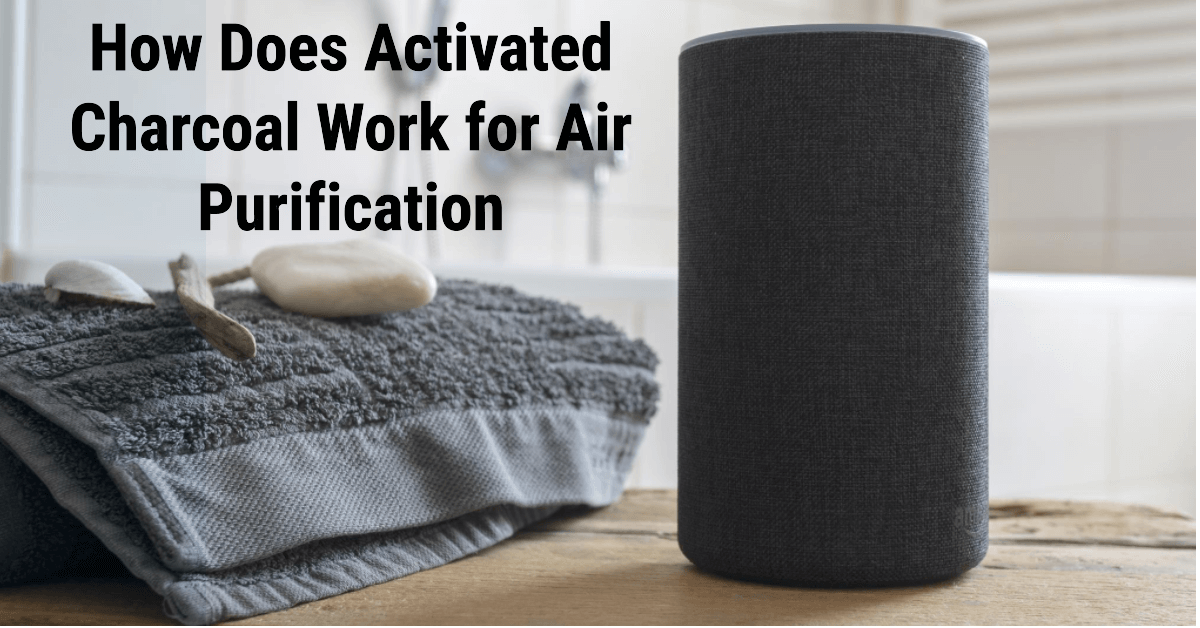To answer your question “How does activated charcoal work for air purification?”, first we need to understand Activated charcoal. It is also known as activated carbon, is a powerful player in improving indoor air quality. Its unique properties allow it to remove a wide range of pollutants from the air.
Activated charcoal, characterized by its porous structure, is not daytoday charcoal. It is specially treated form of carbon possesses a network of microscopic pores that acts as a powerful adsorbent. It can capture a wide range of impurities and gases, from volatile organic compounds (VOCs) to odors and allergens. By engaging in this adsorption process, activated charcoal contributes significantly to fresher, purer indoor air.
In this guide, we will explore what activated charcoal is, how it works for air purification, its benefits, and its applications.
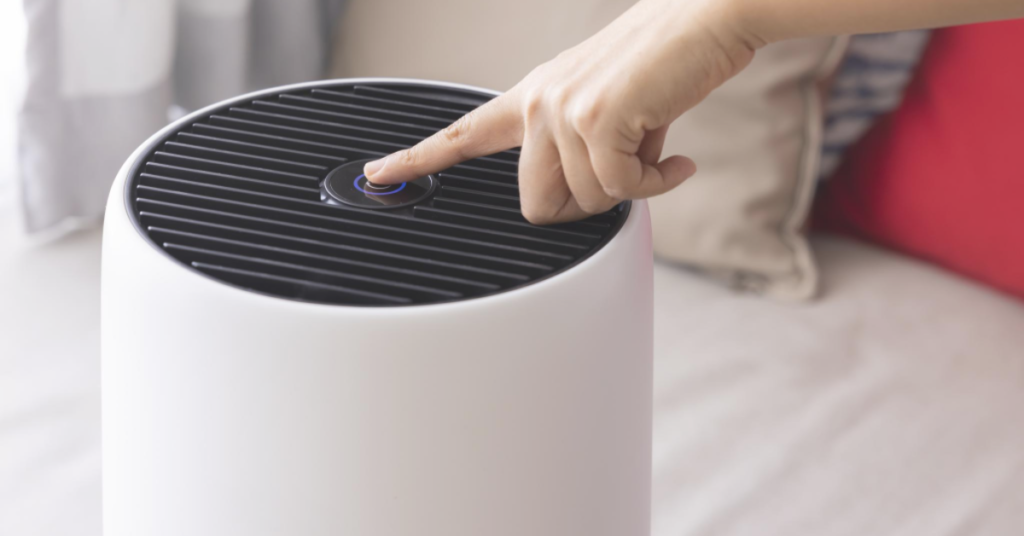
Definition of Activated Charcoal
Activated charcoal i.e. activated carbon, is a unique material with an incredible ability to absorb impurities from the air. It is produced through a specific activation process, which involves heating carbon-rich materials like wood, peat, coconut shells or sawdust. Activated charcoal is a form of carbon processed to have small, low-volume pores. These pores increase the surface area available for adsorption. Adsorption is a process where molecules stick to the surface of a solid.
These pores act like microscopic sponges, trapping pollutants and contaminants from the surrounding air. The result is a highly porous and absorptive material that can significantly improve air quality when used in air purification systems.
Activated Carbon vs. Charcoal – Is There Any Difference?
Activated carbon and regular charcoal both originate from carbon-rich sources and are created through a heating process. However, the key difference lies in their use and properties. Activated carbon is specifically processed to have an extremely porous structure, with a vast surface area that makes it highly effective for adsorption. It’s designed for various applications, including air purification, thanks to its superior adsorption capabilities. Regular charcoal, on the other hand, lacks the specialized structure of activated carbon and is typically used for cooking or grilling. Understanding this difference is vital when choosing the right material for air purification needs.
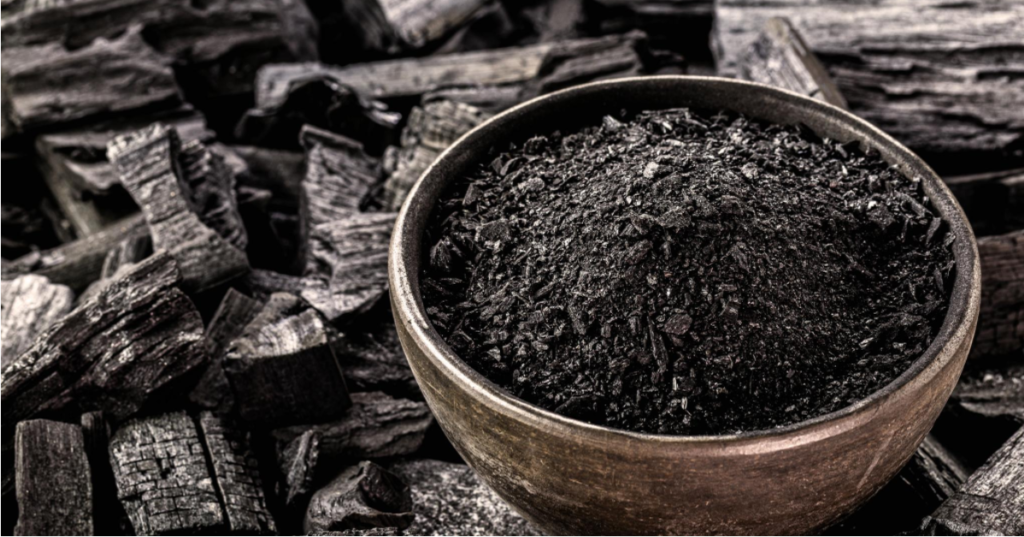
Activated Carbon Adsorption – What Does Adsorb Mean?
Adsorption is a fundamental process in the realm of activated carbon and air purification. Unlike absorption, which involves the uptake of a substance throughout the bulk of a material, adsorption occurs at the surface. Contaminants and pollutants in the air are drawn to and adhere to the porous surface of activated carbon. It’s a bit like a magnet for impurities, capturing and holding them in its labyrinthine structure. This unique adsorption ability is the key to how activated carbon effectively purifies the air.
Production Process of Activated Charcoal or HOW IS ACTIVATED CARBON MADE?
Activated charcoal is made from carbon-rich materials such as wood, coconut shells, or peat. These materials are processed in two main steps:
| Production Step | Description |
|---|---|
| Carbonization | The raw material is heated in the absence of air. This process, known as pyrolysis, removes water and volatile compounds. The result is a charred material with a basic carbon structure. |
| Activation | The charred material is then treated with hot gases or chemicals. This process creates a network of pores within the charcoal, increasing its surface area. There are two main methods of activation: Physical activation: The char is exposed to an oxidizing gas (like steam or carbon dioxide) at high temperatures. Chemical activation: The char is impregnated with chemicals (such as phosphoric acid or potassium hydroxide) and then heated. |
Porous Structure
The porous structure of activated charcoal is what sets it apart from regular charcoal. This structure gives it an incredibly high surface area, making it perfect for adsorption. If we were to magnify activated charcoal, we would see a complex network of nooks and crannies that can trap and hold contaminants. It’s like a microscopic maze where pollutants get lost and stay trapped.

How Does Activated Charcoal Work for Air Purification?
Activated charcoal works through a process called adsorption. Air purifiers with activated charcoal are designed to remove these contaminants.
Activated charcoal primarily works through a process called adsorption, not to be confused with absorption. The pores in activated charcoal trap pollutants from the air. When air passes through the charcoal, pollutants adhere to its surface. It’s a bit like a magnet for pollutants, drawing them out of the air and holding onto them.
Chemical Reactions
Chemical reactions in air purification occur when specific contaminants react with the surface of activated charcoal.
- Volatile Organic Compounds (VOCs): These are chemicals that easily become vapors or gases. They are found in products like paints, varnishes, and cleaning supplies.
- Odors: Activated charcoal can remove unpleasant smells from the air, including those from cooking, smoking, and pets.
- Toxins: It can trap harmful chemicals like benzene, formaldehyde, and xylene.
- Gases: Activated charcoal is effective at capturing gases like ammonia and sulfur dioxide.
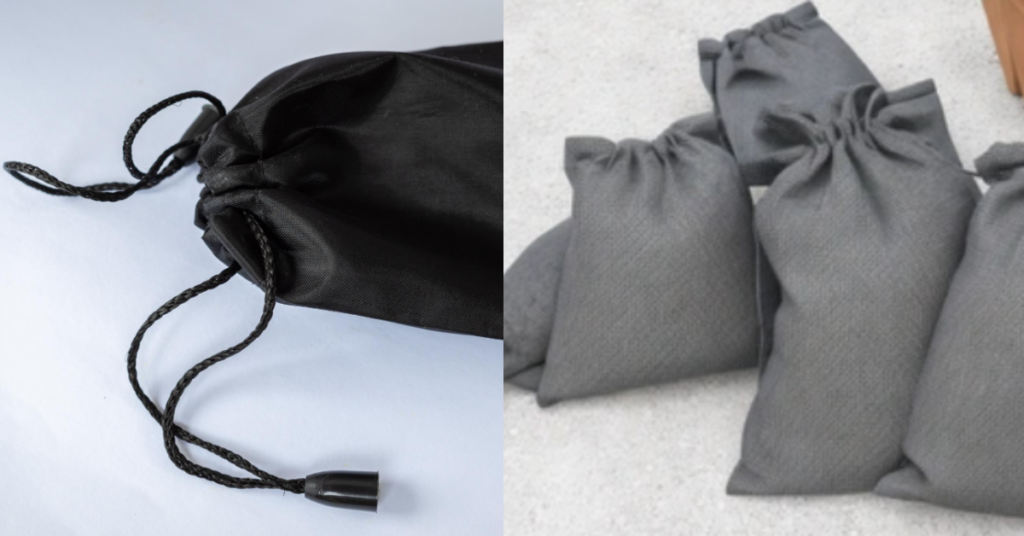
What Is an Activated Carbon Filter?
An activated carbon filter is a critical component in Activated carbon air purification systems. It’s designed to trap and eliminate impurities from the air through adsorption. The filter typically consists of layers of activated carbon, and as air passes through it, pollutants, allergens, odors, and gases are drawn to the porous surface of the carbon and held there. This results in cleaner, fresher air being released into the environment. Activated carbon filters are widely used in air purifiers, making them effective tools for enhancing indoor air quality.
How Can an Activated Carbon Filter Help You?
Activated carbon filters offer several tangible benefits for individuals seeking cleaner and healthier indoor air. They are proficient at removing allergens, odors, and harmful chemicals from the air. By effectively eliminating these impurities, activated carbon filters create a living space with improved air quality, reducing the risks of respiratory issues and discomfort. They help create a more pleasant, breathable atmosphere, making them a valuable addition to any air purification system.
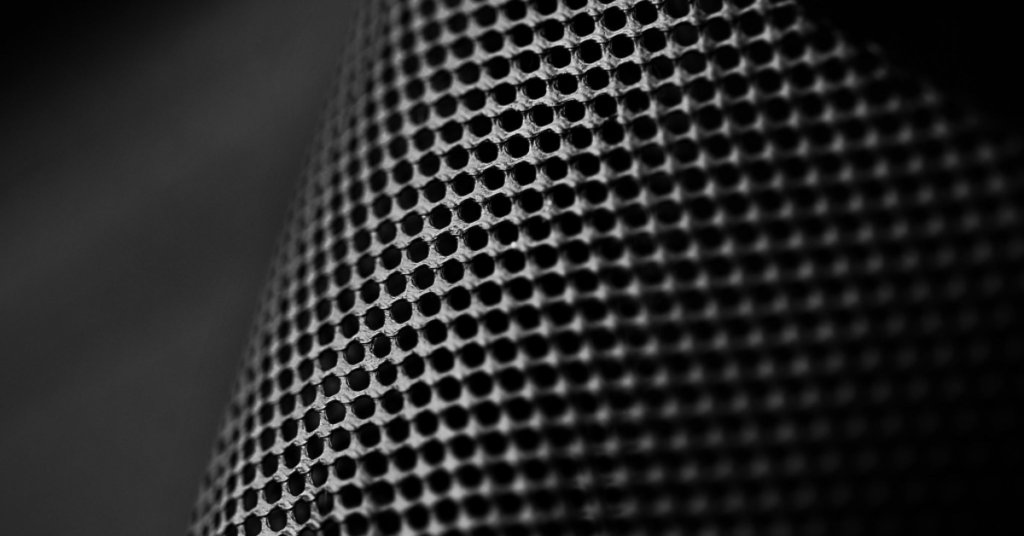
Are you curious about other methods of air purification? Check out our Air Purifier Guide for a comprehensive overview of various air purification technologies and methods.
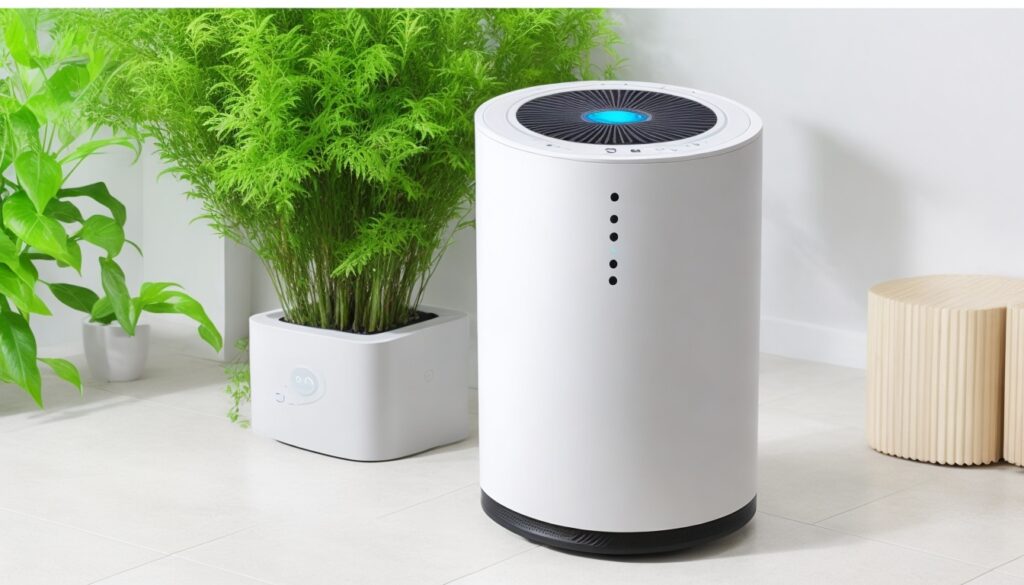
Benefits of Activated Charcoal Air Purification
Now that we’ve unraveled the science behind activated charcoal’s air-purifying abilities, let’s explore the benefits it brings to your indoor environment. Using activated charcoal in air purification systems can have a profound impact on your home’s air quality and overall well-being.
Improved Indoor Air Quality
One of the most significant advantages of activated charcoal air purification is the substantial improvement in indoor air quality. By effectively removing contaminants and pollutants, it creates a fresher and cleaner living space. You’ll notice a reduction in airborne allergens, odors and potentially harmful chemicals.
Health Benefits
The enhanced air quality resulting from activated charcoal air purification can lead to a range of health benefits. For individuals with allergies or asthma, a reduction in allergens can alleviate symptoms and improve respiratory health. Moreover, cleaner air can contribute to better overall health and well-being.
Odor Control
Activated charcoal’s ability to absorb and neutralize odors is a game-changer for homes and spaces with persistent or unpleasant smells. Whether it’s your kitchen, bathroom or pet area, you can enjoy a fresher and more inviting atmosphere with activated charcoal air purification.
Non-toxic and Safe
Activated charcoal is non-toxic and safe to use in homes and workplaces. It does not release harmful chemicals into the air.
If you’re interested in exploring the world of air purifiers further, our Benefits of Air Purifiers article provides insights into the advantages of different air purification technologies.
Applications of Activated Charcoal in Air Purification
Activated charcoal is used in various air purification applications:
Residential Use in Air Purifiers
Many home air purifiers use activated charcoal filters. These purifiers can remove odors, allergens, and chemical pollutants, providing cleaner air in your living spaces.
HVAC Systems
Activated charcoal filters can be integrated into HVAC systems. They help to improve indoor air quality throughout the entire home or building.
Commercial and Industrial Applications
In industrial settings, activated charcoal is used to remove harmful gases and chemicals from the air. This helps to protect workers and reduce environmental pollution.
Automotive Air Filters
Activated charcoal is used in car air filters to remove odors and pollutants from the cabin air. This provides a more comfortable driving experience.
Medical and Healthcare Environments
In medical and healthcare facilities, maintaining pristine air quality is essential for patient well-being and infection control. Activated charcoal filters are used in hospital HVAC systems to capture and remove airborne pathogens and odors. This helps create a safer and more comfortable environment for patients and healthcare professionals.
Interested in finding the right air purifier for your specific needs? Our Air Purifier Selection Guide can assist you in choosing the perfect air purification solution.
Maintenance and Replacement
To ensure the effectiveness of activated charcoal filters, regular maintenance and replacement are essential. Do : Regular Inspection, Follow the manufacturer’s recommendations for replacing the filters. Dispose of used filters properly according to local regulations.
Conclusion
We have now seen How Does Activated Charcoal Work for Air Purification. Whether used in home air purifiers, HVAC systems, or industrial applications, activated charcoal provides cleaner, safer air. By understanding how activated charcoal works and its benefits, you can now make good informed decisions to keep your air clean and healthy.
FAQ’s related with “How Does Activated Charcoal Work for Air Purification”
Does activated charcoal really clean the air?
Yes, activated charcoal effectively cleans the air. It works through a process called adsorption, where it attracts and holds onto various impurities present in the air. These impurities can include odors, gases, volatile organic compounds (VOCs), and allergens. By removing these contaminants from the air, activated charcoal contributes to better indoor air quality, making the air fresher and more pleasant to breathe.
How do you use activated charcoal as an air purifier?
To use activated charcoal as an air purifier, you typically place it in a container that allows air to flow through while keeping the charcoal contained. This can be a bag, filter, or even an open container. Position the container in areas where you want to improve air quality, and the activated charcoal will work by adsorbing impurities as air passes through it.
How long does charcoal last as an air purifier?
The lifespan of charcoal as an air purifier can vary. It depends on factors such as the size of the charcoal container, the amount of pollutants in the air, and the specific type of activated charcoal used. In general, you can expect activated charcoal to last anywhere from a few weeks to several months before it becomes saturated and less effective. At that point, it’s typically replaced.
What do charcoal filters remove from the air?
Charcoal filters are effective at removing a range of contaminants from the air. They excel at eliminating odors, gases, and volatile organic compounds (VOCs). Additionally, they can help reduce some allergens and particulate matter, leading to a cleaner and more pleasant breathing environment.
What toxins does activated charcoal absorb?
Activated charcoal has the ability to adsorb a variety of toxins and harmful substances. This includes chemicals, fumes, and volatile compounds that may be present in the air. It is particularly effective at adsorbing organic compounds and neutralizing unpleasant or harmful smells. This property makes it valuable for air purification and odor control.
How many charcoal bags per room?
The number of charcoal bags needed per room depends on factors like the room’s size and the severity of air quality issues. As a general guideline, a single charcoal bag is often sufficient for a small room. Larger rooms or areas with more pollution sources might require multiple bags to effectively improve air quality. The specific recommendations may vary based on the product and manufacturer’s instructions.
Does charcoal bags eliminate mold?
Charcoal bags can help manage and reduce mold-related odors. They do this by adsorbing excess moisture from the air, which can contribute to mold growth. While they can be a helpful part of a strategy to control mold-related issues, they may not completely eliminate the root cause of mold growth. Preventing and addressing moisture issues is essential for long-term mold control.
How often do you change the filter in a charcoal air purifier?
The frequency of changing the filter in a charcoal air purifier depends on several factors, including the manufacturer’s recommendations and the level of pollutants in the environment. In general, filters are typically replaced every few months to maintain optimal air purification. Regular replacements ensure that the filter continues to effectively adsorb impurities and provide clean air.
What happens when you spread charcoal around your house?
When you spread charcoal around your house, it can help reduce indoor odors by adsorbing and neutralizing them. It’s often used in areas like refrigerators, closets, and bathrooms to create a fresher environment. However, it’s important to use it in a controlled manner to prevent a mess. Activated charcoal can be effective in reducing unwanted smells, making the indoor atmosphere more pleasant and inviting.
DheerajSonwane is a dedicated writer with expertise in air purification technologies. He focuses on providing well-researched content to help readers improve indoor air quality in homes and businesses. As the lead writer at AirPurifierMaster.com, Dheeraj offers practical advice his insightful reviews guide individuals in choosing the best air purifiers for their needs.

